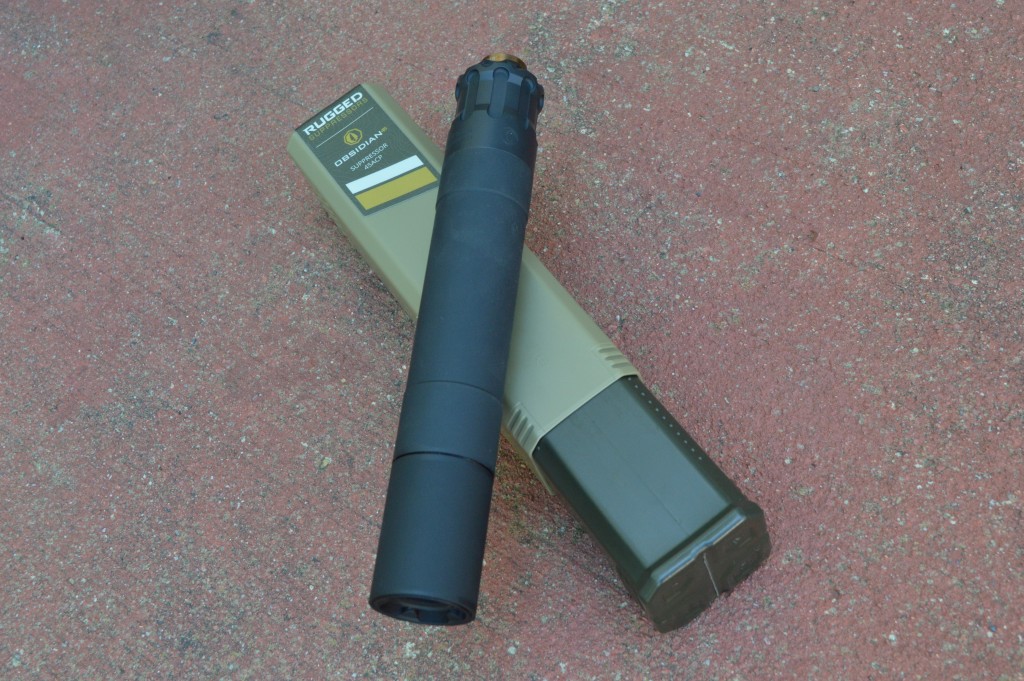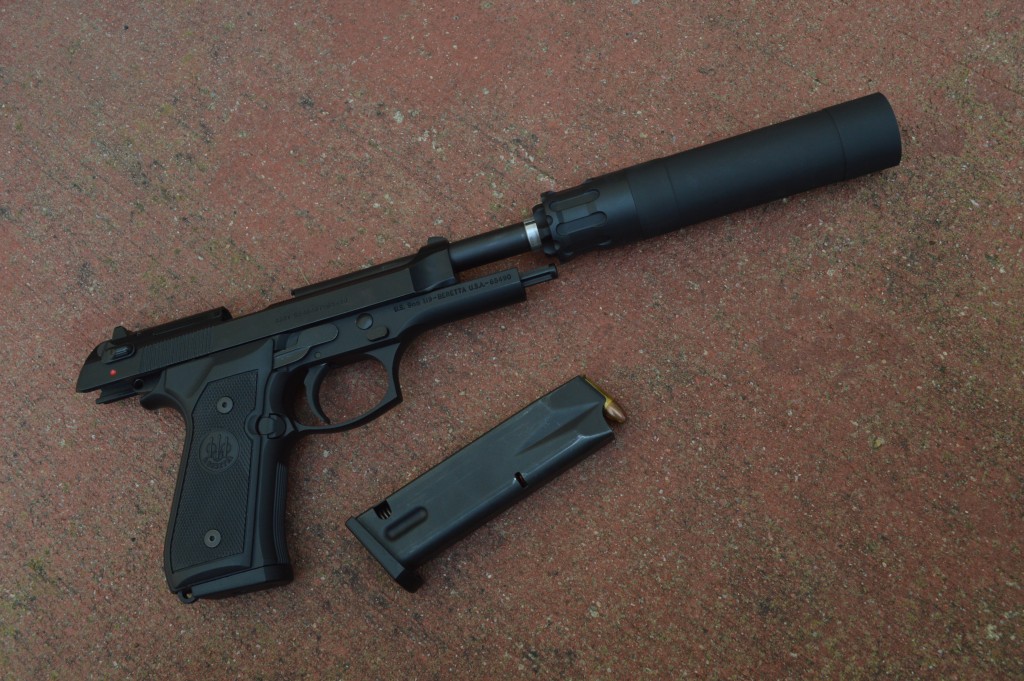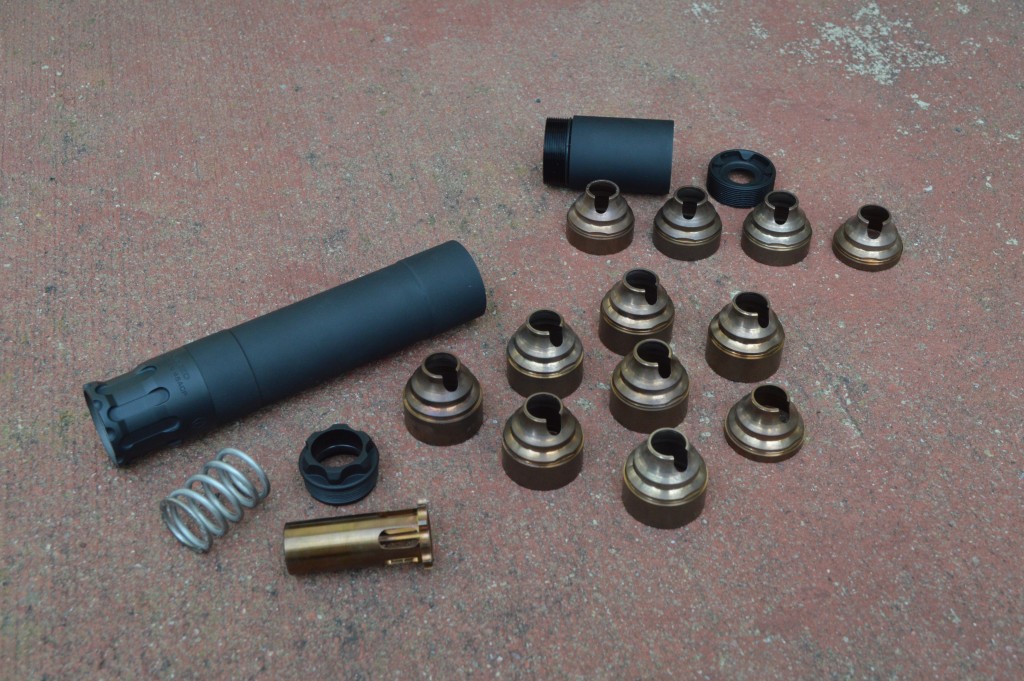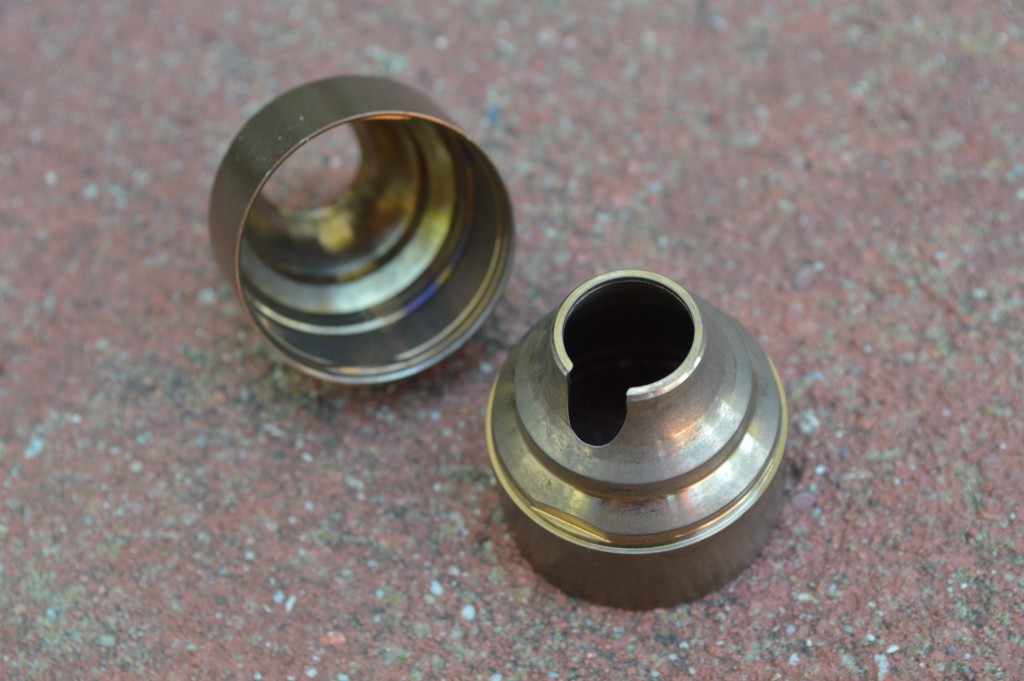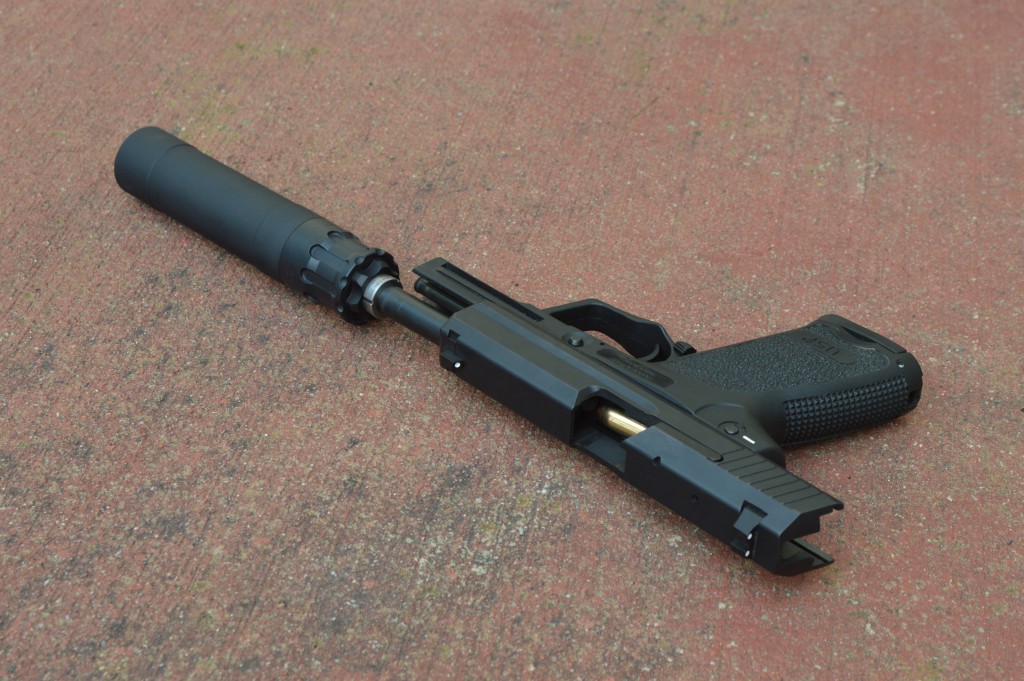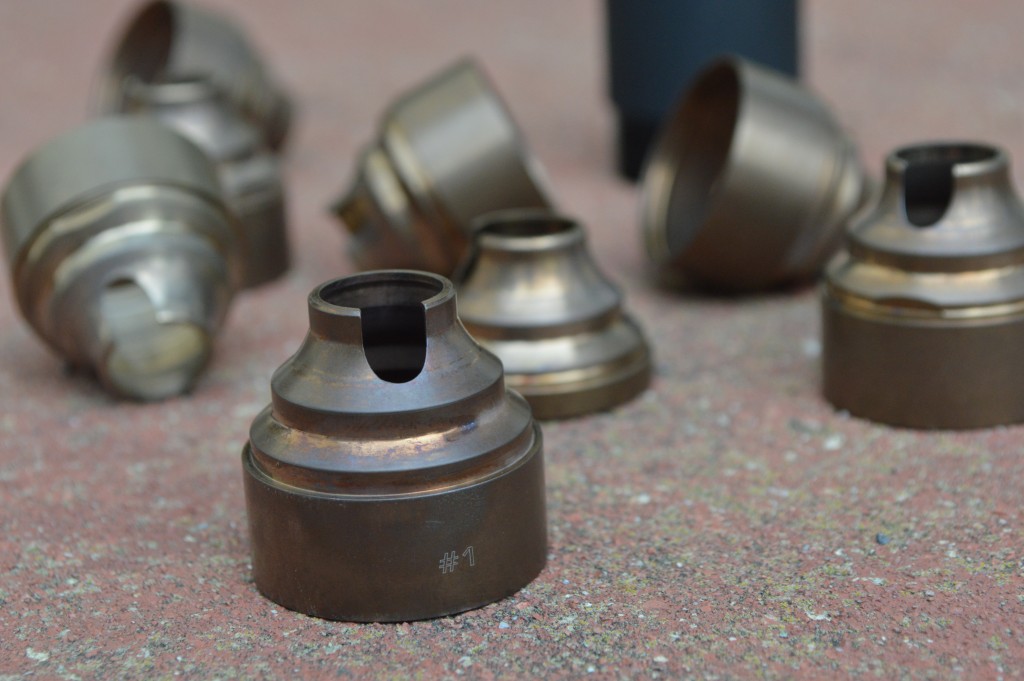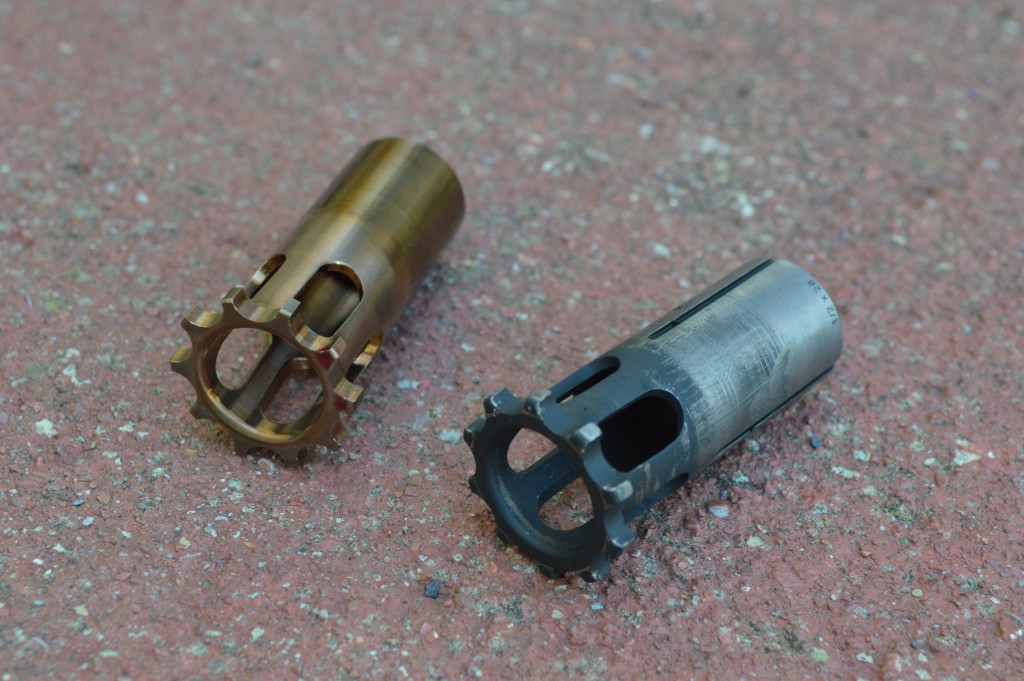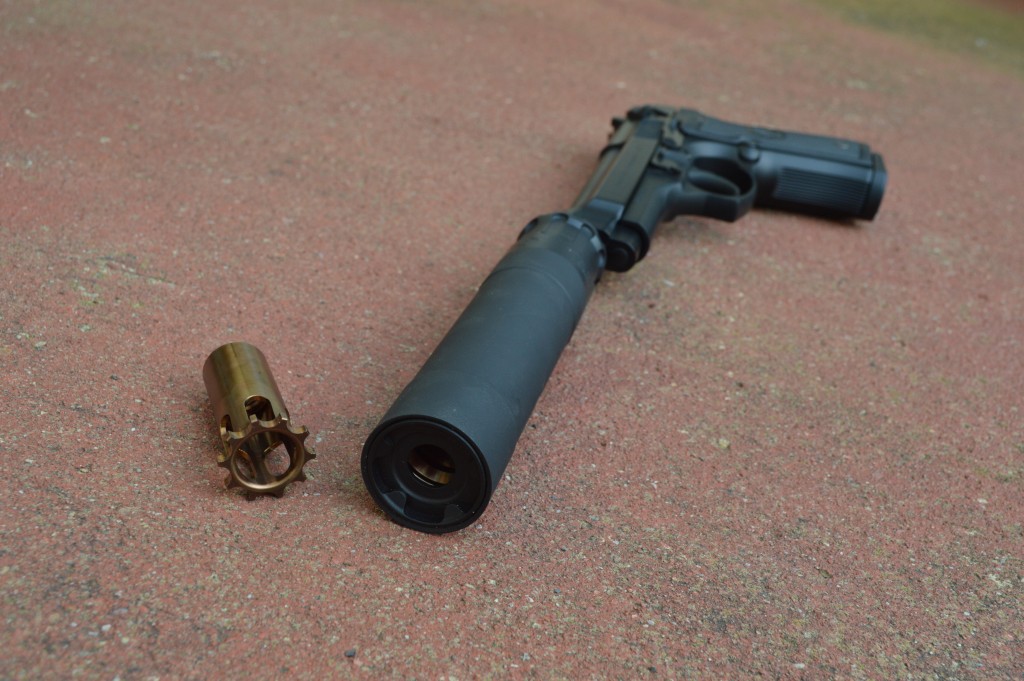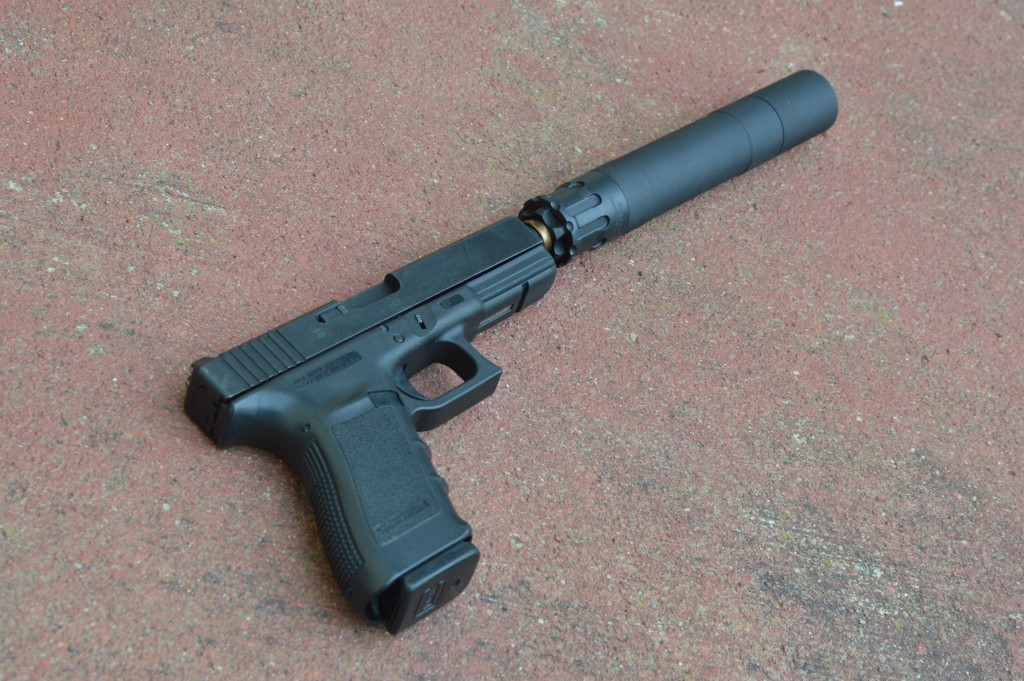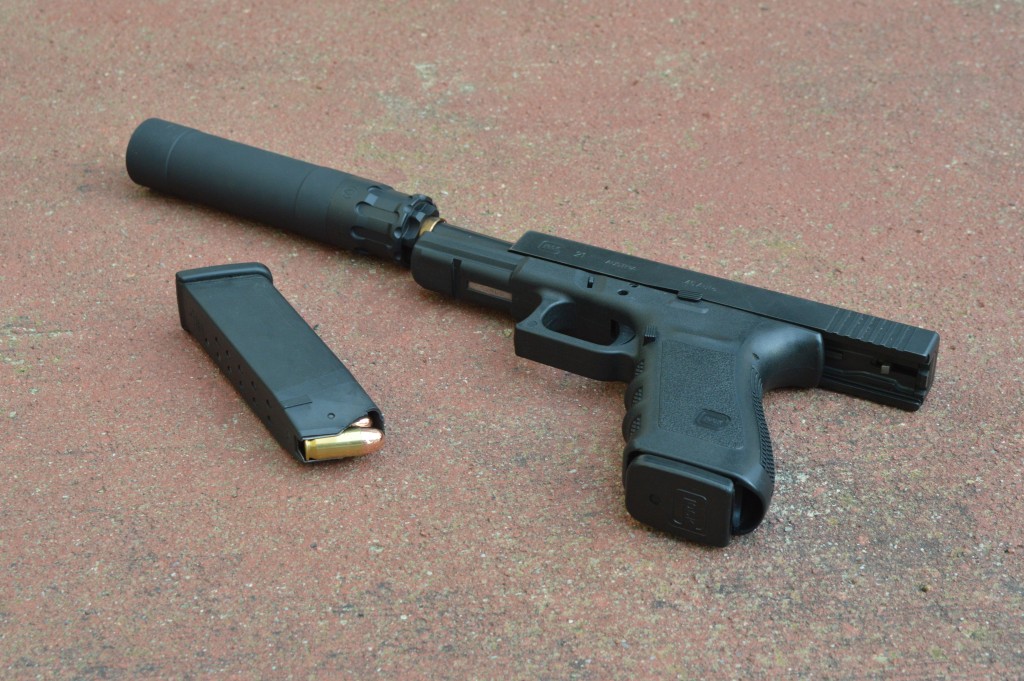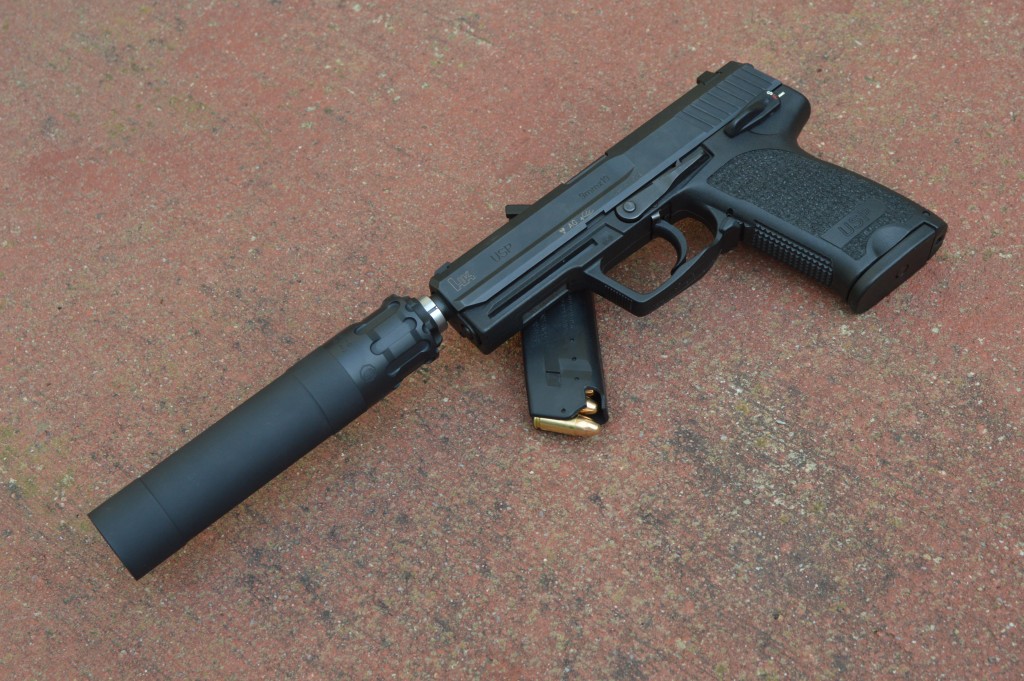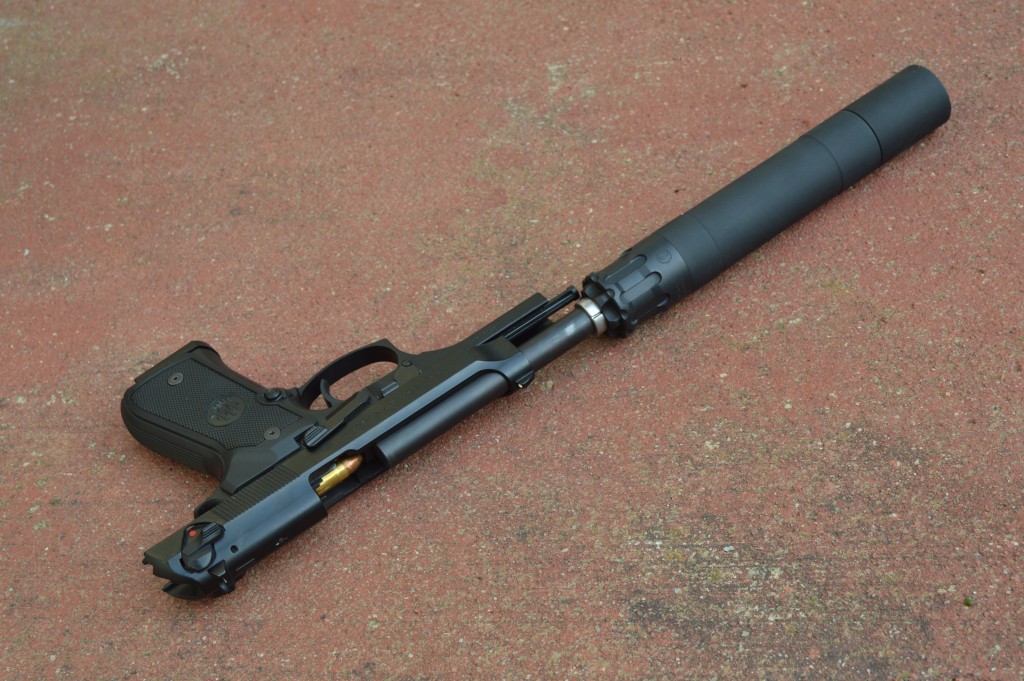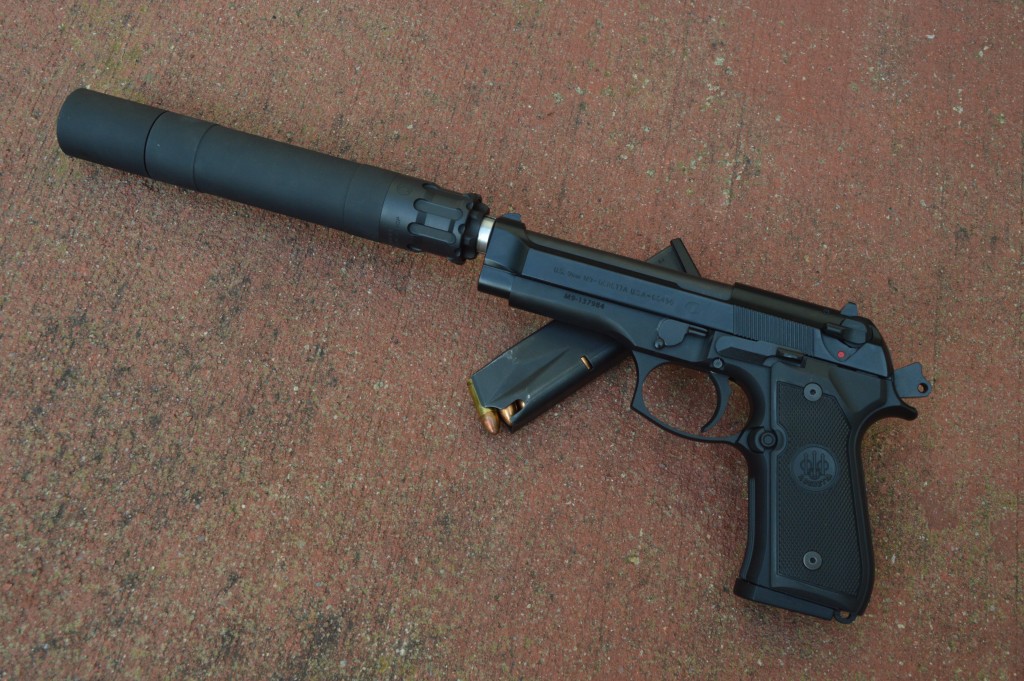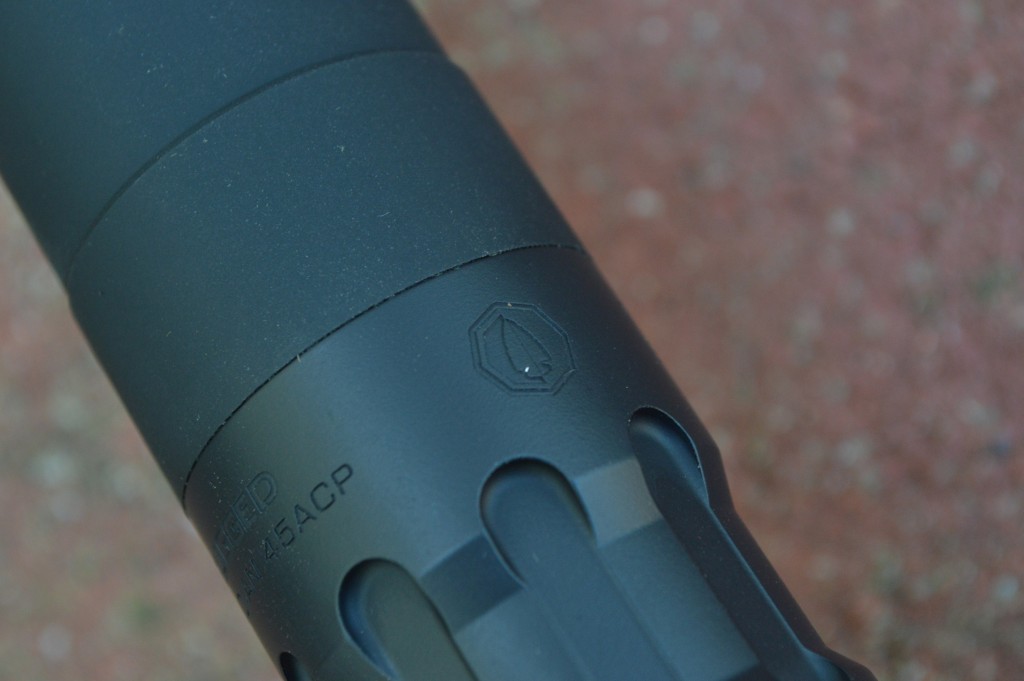Silencer Shop Authority: Rugged Suppressors Obsidian 45 Review
Back in December 2016, the guys at Rugged Suppressors kept silencer fans on their toes when they dropped two new products within ten days of one another. The first out the gate was their compact Razor 762, a .30 caliber can that offered the same durability as their Surge 762 in a much smaller and lighter package. The second release was the announcement of Rugged’s first pistol suppressor, the Obsidian 45. A fully-featured .45 ACP suppressor, the Obsidian is similar to Rugged’s Surge as it can be configured in two different lengths. Adaptable cans seem to be a growing trend in the industry and Rugged Suppressors has fully embraced the movement. After pestering Silencer Shop to get an Obsidian to me for review, I finally spent some time with one a few weeks ago. Let’s take a closer look at this compelling new pistol suppressor.
Size & Weight
As I mentioned in the opening, much of the draw with the Obsidian is that, like some of its competition, the suppressor easily swaps between two different lengths. The longest and quietest configuration of the silencer measures 8.75″ in length and weighs a rather hefty 13.7 ounces. This makes it one of the largest .45 ACP suppressors I’ve handled – even a bit longer than my SilencerCo Octane 45. Like almost all other .45 caliber cans, the Obsidian measures 1.375″ in diameter.
The lengthy full-size configuration is perfectly acceptable considering that the Obsidian can be shortened, virtually on the fly. Removing the forward section of the suppressor shaves two inches off its length, making for a 6.75″ unit. Shortening the silencer also drops over 2.5 ounces and brings the Obsidian down to 11 ounces overall. The difference in configurations is no small detail. While shooters will give up several decibels to use the shorter setup, pistols handle much better with less weight hanging off their barrels.
Materials & Design
It might be an exaggeration to say that companies without adaptable cans are “uncool”, but the trend towards adjustable-length suppressors is quite clear. Since the folks at Rugged were the first to bring adaptability to rifle silencers (at least in the US) with their Surge, it only makes sense that the Obsidian is also a configurable suppressor.
While the Obsidian only supports two different lengths, the outer tube of the suppressor consists of three different pieces. The booster housing, at the rear of the silencer, is separate from the rest of the tube and is made of 17-4 stainless steel. The hearty stainless steel reinforces the suppressor’s blast chamber, but by putting the serial number on this housing, Rugged also makes repairs to the forward sections of the tube much easier. As is typical of most pistol silencers, the majority of the Obsidian’s outer tube(s) is anodized aluminum.
Inside the (full size) Obsidian sit a whopping twelve 17-4 stainless baffles, ten of which are full height and two of which are shortened. Shortening the suppressor removes three of the full baffles and one of the smaller variants.
If you’ve ever seen SilencerCo’s Octane 45 (designed by Rugged’s founder, Henry Graham), the Obsidian’s conical baffles with scalloped ports should look roughly familiar. They also click together in exactly the same manner. The Obsidian’s key departure from Graham’s previous design is that each baffle features a ridge near the cone’s halfway point. Another noteworthy addition to the Obsidian’s distal baffles are two tangentially-machined flats, which help with port alignment during reassembly. According to Graham, keeping the baffle ports lined up promotes better performance.
Select-a-Size
Shortening the Obsidian is simple and requires only unscrewing the can’s forward module and moving the end cap over to the main tube. Rugged’s 9mm end cap fits the Obsidian 45 for those who really want to chase decibels. In my opinion, such an option isn’t really necessary and it introduces the risk of accidentally sending a .45 caliber bullet through the 9mm cap, which would certainly ruin the part and could damage the silencer.
Disassembly
Disassembling the Obsidian is about as you would expect. With the end cap attached to the front module, the four forward baffles are captive, even when unscrewed from the rest of the suppressor. Removing the front cap allows the baffles inside the module to slide out. So long as the front section and end cap are both off, the baffles inside the can’s main body can be freely dumped for cleaning.
Current Octane and Osprey owners who are also interested in the Obsidian will be happy to know that Rugged has approved the silencer for use with SilencerCo’s pistons and other adapters. I tried my 1/2-28 SilencerCo piston in the Obsidian and it functioned perfectly fine, but did seem to fit slightly looser than Rugged’s .578-28 part. For 3-lug fans, Rugged also makes an internally-housed adapter.
According to Silencer Shop’s testing, the Obsidian (in full size configuration) is the quietest .45 ACP suppressor to date. Their meter put the Obsidian at a hair over 129 dB (one meter left of the muzzle) on a 1911 with 230 grain ammunition. The same test produced sound pressure levels in the 123 dB range on a Smith & Wesson M&P 9 with subsonic ammunition. There’s no doubt these numbers are phenomenal, but does the Obsidian live up to them in person? The answer, based on my experience, is absolutely yes.
I tested Rugged’s can on three different handguns: a Beretta M9, a Heckler & Koch USP 9, and a Glock 21SF. Even on the Glock, the suppressor fell within the range most would call “hearing safe”. As always, hearing protection is still the safest route. The Obsidian’s overall tone is similar to the Octane’s and perhaps slightly higher pitched than the AAC Ti-Rant 45M I tested next to it. First round pop was noticeable, but not overwhelming. It may not be visible in the video, but due to the Obsidian’s weight, my Glock’s slide was somewhat sluggish when returning to battery. That has been rather normal for the 21SF and its Lone Wolf barrel.
The 9mm hosts were positively pleasant when paired with the Obsidian. I am fortunate to have access to Silencer Shop’s full line of suppressors for review and sometimes I forget just how effective silencers can be. While plinking with my USP and the Obsidian, I decided to ring a few steel targets inside the pistol bay. That wasn’t my best idea, but it was impressive to hear the loud smack of the bullet against steel compared to the relatively quiet report of the Obsidian-equipped USP.
Despite its excellent performance, the Obsidian isn’t perfect. On my M9, I noticed that Rugged’s can produced an uncomfortable amount of backpressure. As gas expands into the silencer, pressure inside the tube kicks some of it (along with powder residue) back into the barrel and out through the breech. This nasty side-effect is called backpressure or blowback. When using a SilencerCo piston (as I was), the gassy blowback can be aggravated by the slots machined on the outside of the part.
The Obsidian performed well on the M9, but the clould of debris sprayed into my face and onto my arms after each trigger pull was unpleasant. Part of this “problem” can be attributed to the M9’s open slide, but if I were to purchase the Obsidian for myself, I would be interested to try Rugged’s non-slotted 1/2-28 piston and perhaps a stronger recoil spring to help keep the pistol’s action closed a split second longer.
In my opinion, the Obsidian really shines in its short configuration. If you think back just five years or so, “hearing safe” .45 ACP suppressors simply weren’t very common. Now, we have several options that fit that bill, but the Obsidian is impressive because it remains a strong performer even when shortened. With the 6.75″ Obsidian attached to my Glock 21SF, I ran through two or three magazines at a time without discomfort. While the muzzle report was noticeably louder with the shorter configuration, it was still tolerable and the pistol was far more manageable. I imagine that many Obsidian owners will use the short format far more often than they might have initially anticipated.
Conclusion
As it stands, the Obsidian 45 is probably the best all-around pistol suppressor on the market. It is the quietest I’ve seen (heard?) to date, offers adaptable lengths, and can be attached to practically any pistol caliber host. The only real downsides to mention are its relatively hefty weight (I would love to see a titanium-baffled version) and the amount of blowback I experienced on some handguns. Both of those issues are, in my opinion, relatively minor considering the Obsidian’s performance and versatility.
Interested suppressor buyers can find the Obsidian at Silencer Shop for a little over $650, depending on Powered By dealer pricing.
An information security professional by day and gun blogger by night, Nathan started his firearms journey at 16 years old as a collector of C&R rifles. These days, you’re likely to find him shooting something a bit more modern – and usually equipped with a suppressor – but his passion for firearms with military heritage has never waned. Over the last five years, Nathan has written about a variety of firearms topics, including Second Amendment politics and gun and gear reviews. When he isn’t shooting or writing, Nathan nerds out over computers, 3D printing, and Star Wars.


